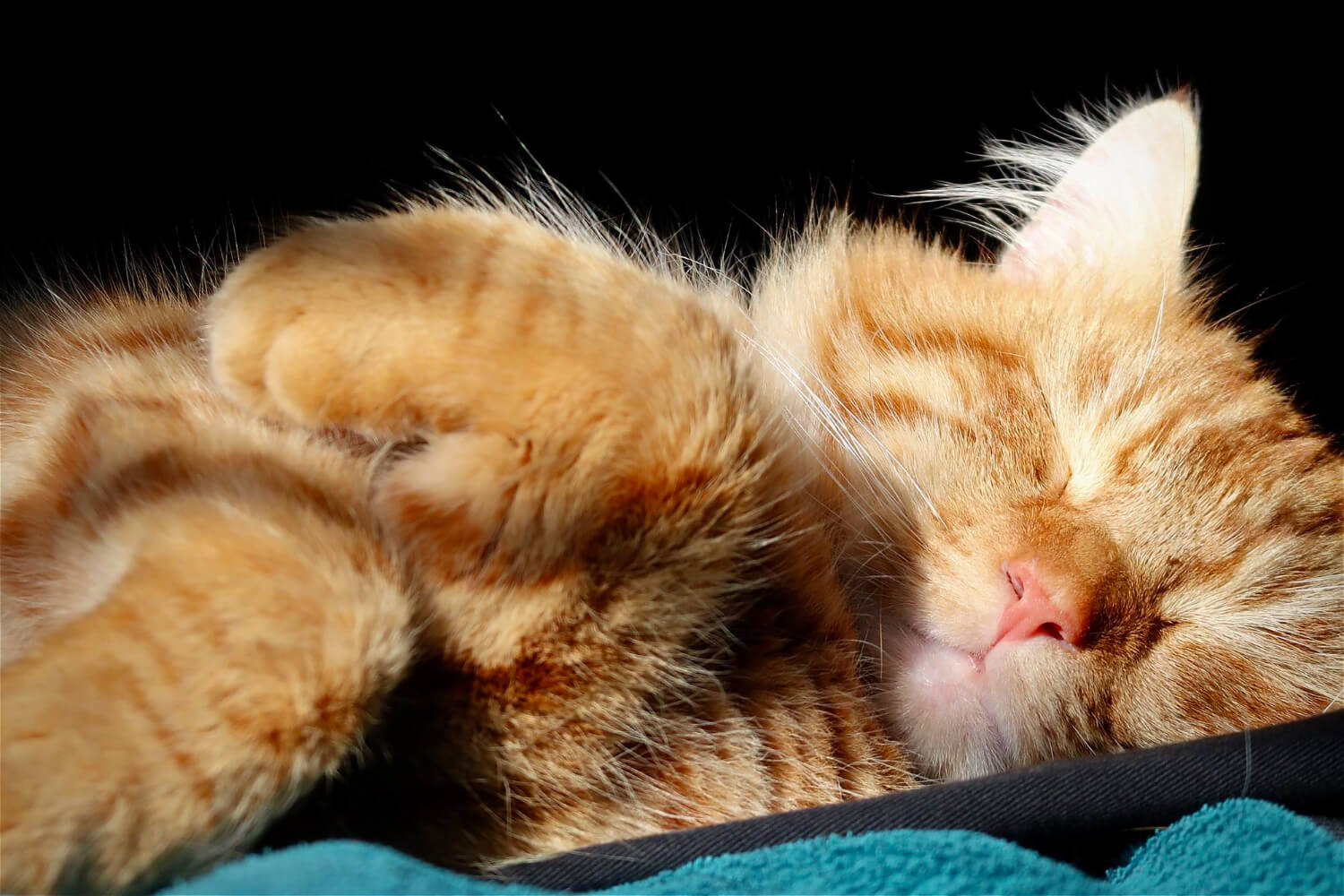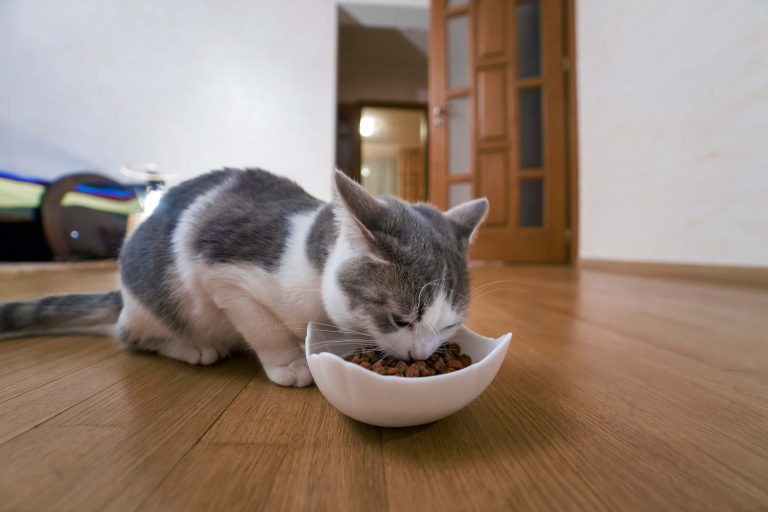How Long Does Ketamine Last in Cats?
As a pet owner, you might have heard of ketamine being used in veterinary medicine, particularly for cats. Ketamine is a commonly used anesthetic and pain relief medication that has been in use for many years.
It’s known for its rapid onset and relatively short duration of action, which makes it a preferred choice in various veterinary procedures. But a question often arises: how long does ketamine last in cats?
This guide aims to delve into the specifics of ketamine’s duration in cats, explaining what factors influence its effects and providing a comprehensive understanding for pet owners and enthusiasts.
Key Takeaways:
- Ketamine typically lasts between 30 minutes to an hour in cats, with some residual sedation possibly lasting a few hours.
- The duration can be affected by dosage, the cat’s metabolism, concurrent medications, health status, and the route of administration.
- Ketamine can be administered intravenously (IV), intramuscularly (IM), or subcutaneously (SC), each with different onset and duration times.
- Post-administration, monitor your cat for prolonged sedation or unusual behavior, provide a calm recovery environment, and ensure hydration and light nutrition.
- Kittens and smaller cats may metabolize ketamine faster, leading to shorter effects, while older or larger cats may experience longer-lasting effects.
- What is Ketamine and Why is it Used in Cats?
- How Long Does Ketamine Last in Cats?
- Factors Influencing the Duration of Ketamine in Cats
- Practical Implications for Pet Owners
- Ketamine Administration in Cats: Routes and Dosages
- Effects of Ketamine on Cats of Different Ages and Sizes
- Monitoring and Aftercare
- Potential Side Effects of Ketamine in Cats and Mitigation Strategies
- Common Side Effects of Ketamine
- Serious Side Effects and When to Seek Help
- Mitigating Side Effects
- FAQ
- How long does ketamine typically last in cats?
- What factors can influence the duration of ketamine’s effects in cats?
- Are there any differences in the duration of ketamine’s effects between cats of different ages or sizes?
- How soon after administration does ketamine start to take effect in cats?
- What steps should be taken if ketamine’s effects last longer than anticipated in a cat?
- Is there a maximum safe duration for ketamine’s effects in cats?
What is Ketamine and Why is it Used in Cats?
Ketamine is a type of anesthetic, which means it induces a trance-like state while providing pain relief, sedation, and amnesia. In the context of veterinary medicine, ketamine is frequently used for its reliable and fast-acting properties.
For cats, ketamine is often employed during surgeries, dental procedures, and other situations where general anesthesia is required. Its ability to provide profound analgesia and sedation makes it an invaluable tool in a veterinarian’s arsenal.
How Long Does Ketamine Last in Cats?
The duration of ketamine in cats can, and will vary based on several factors. Typically, the effects of ketamine in cats last between 30 minutes to an hour.
The duration can be influenced by the dosage administered, the individual cat’s metabolism, and other concurrent medications.
While the primary effects might wear off within this timeframe, it is not uncommon for some residual sedative effects to linger for a few hours post-administration.
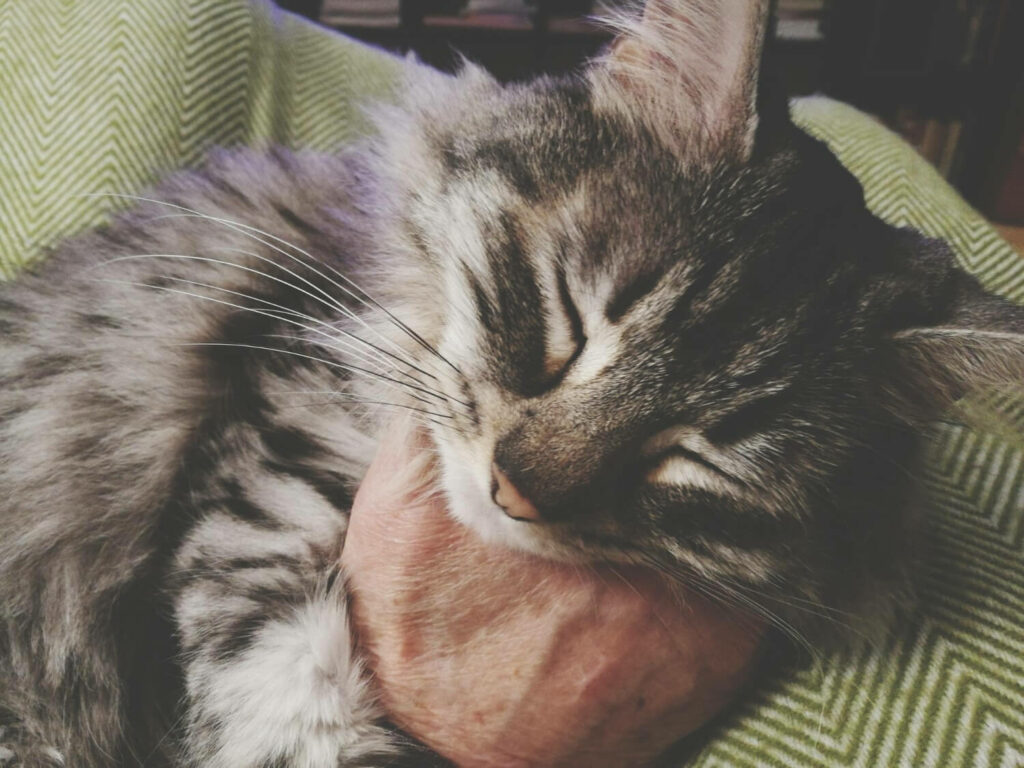
Factors Influencing the Duration of Ketamine in Cats
Several factors can influence how long ketamine lasts in cats. These include:
- Dosage: Higher doses of ketamine generally result in longer durations of action. Veterinarians tailor the dosage based on the specific needs of the procedure and the cat’s overall health.
- Metabolism: Individual variations in metabolism can cause differences in how quickly ketamine is broken down and eliminated from the body. Younger, healthier cats may metabolize the drug more rapidly than older or sick cats.
- Concurrent Medications: The use of other drugs in conjunction with ketamine can either prolong or shorten its effects. For instance, sedatives or analgesics used alongside ketamine might extend the duration of sedation.
- Cat’s Health Status: Cats with liver or kidney disease may process ketamine more slowly, resulting in prolonged effects.
- Route of Administration: Ketamine can be administered intravenously (IV), intramuscularly (IM), or subcutaneously (SC). The route of administration can impact both the onset and duration of its effects. For example, IV administration typically leads to a quicker onset but shorter duration compared to IM or SC routes.
Practical Implications for Pet Owners
Understanding the duration of ketamine in cats is crucial for pet owners. If your cat undergoes a procedure requiring ketamine, being informed about what to expect can help you provide better post-procedural care. Here are a few tips:
- Monitor Your Cat: After a procedure involving ketamine, keep a close eye on your cat for any signs of prolonged sedation or unusual behavior. Most cats will start to recover within an hour, but it’s important to ensure they are in a safe and comfortable environment as they wake up.
- Provide a Quiet Space: A calm and quiet space can help your cat recover more comfortably. Limit their activity and prevent them from jumping or running around until they are fully awake and alert.
- Hydration and Nutrition: Ensure your cat has access to fresh water and, once they are fully awake, offer a small amount of food. Some cats might feel slightly nauseous post-anesthesia, so it’s best to start with a light meal.
- Follow-Up Care: Adhere to any follow-up care instructions provided by your veterinarian. If you notice any concerning symptoms such as prolonged drowsiness, vomiting, or difficulty breathing, contact your vet immediately.
Ketamine Administration in Cats: Routes and Dosages
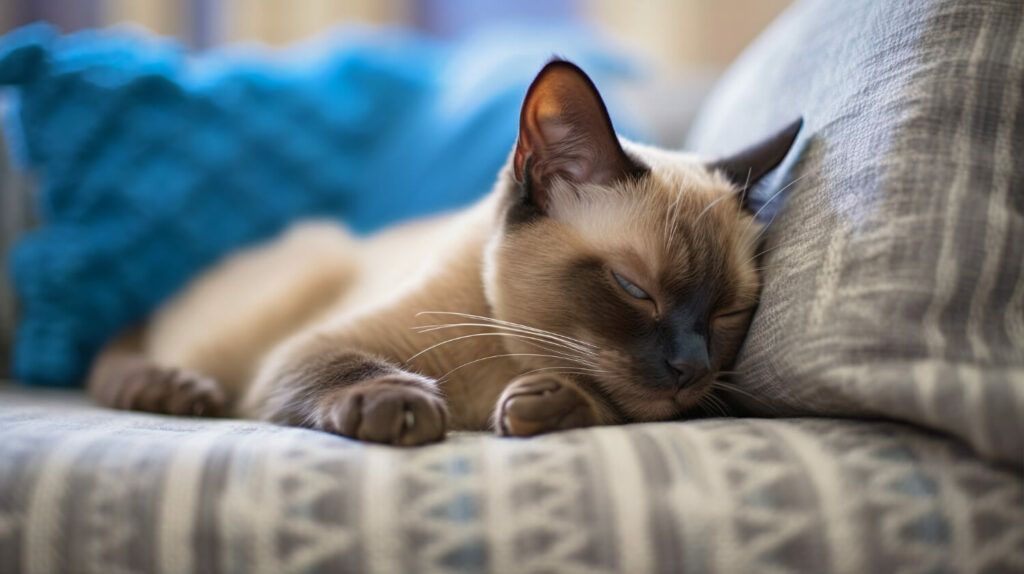
Intravenous (IV) Administration
Intravenous (IV) administration of ketamine is one of the most efficient ways to introduce the drug into a cat’s system.
When ketamine is given intravenously, it quickly enters the bloodstream, leading to a rapid onset of effects.
Typically, the sedative effects of IV-administered ketamine can be observed within seconds to a couple of minutes. This method is often chosen for procedures requiring immediate and profound sedation.
- Advantages: Rapid onset of action, precise control over the level of anesthesia, and the ability to titrate the dose as needed.
- Disadvantages: Requires skilled personnel to insert and manage an IV line, which may not always be feasible in a stressed or aggressive cat.
Intramuscular (IM) Administration
Intramuscular (IM) administration is a commonly used route for delivering ketamine to cats. This method involves injecting the drug directly into a muscle, where it is absorbed into the bloodstream over a period of time.
- Onset of Effects: IM ketamine typically takes effect within 5-10 minutes.
- Duration: The sedative and anesthetic effects generally last between 30 minutes to an hour, depending on the dosage and individual cat’s response.
- Advantages: Easier to administer compared to IV, especially in a non-cooperative cat.
- Disadvantages: Slightly slower onset compared to IV administration, and there might be some discomfort associated with the injection.
Subcutaneous (SC) Administration
Subcutaneous (SC) administration involves injecting ketamine under the skin. This route is less commonly used for anesthesia but might be considered for pain management in certain situations.
- Onset of Effects: SC administration has a slower onset compared to IV and IM, usually taking 15-20 minutes to take effect.
- Duration: The effects might last longer compared to IV or IM routes, potentially extending to 1-2 hours.
- Advantages: Easier to administer and less painful than IM injections, making it a good option for longer-lasting sedation.
- Disadvantages: Slower onset and less predictable absorption rate compared to IV or IM routes.
Effects of Ketamine on Cats of Different Ages and Sizes
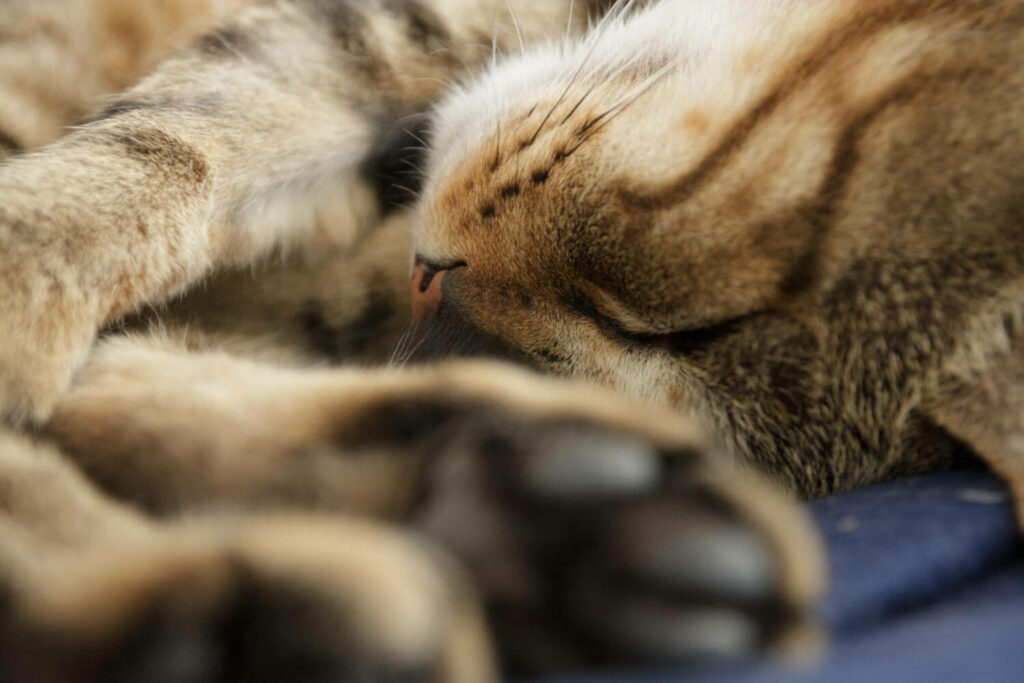
Kittens vs. Adult Cats
The age of the cat can significantly influence how ketamine works and how long its effects last. Kittens, due to their developing physiology and higher metabolic rates, might process ketamine differently compared to adult cats.
- Kittens: Kittens may exhibit a quicker onset of effects due to their faster metabolism. However, the duration might also be shorter as their bodies process and eliminate the drug more rapidly. It is crucial to adjust dosages carefully to avoid overdosing and to monitor kittens closely for any adverse effects.
- Adult Cats: Adult cats generally have a more stable metabolic rate, which makes their response to ketamine more predictable. The duration of ketamine’s effects in adult cats usually falls within the standard 30 minutes to an hour range, with some residual effects possibly lasting a bit longer.
Small vs. Large Cats
The size and weight of a cat can also play a role in determining the duration of ketamine’s effects. Larger cats may require higher doses to achieve the same level of sedation as smaller cats.
- Small Cats: Smaller cats, due to their lower body mass, may experience the effects of ketamine more intensely and for a slightly longer duration. Vets often adjust the dosage based on the weight of the cat to ensure safe and effective anesthesia.
- Large Cats: Larger cats might metabolize ketamine more slowly, resulting in a longer duration of effects. It is important for veterinarians to balance the dosage to avoid prolonged sedation while ensuring adequate anesthesia.
Monitoring and Aftercare
After ketamine administration, it is essential to monitor the cat closely as it recovers. While the primary effects of ketamine might wear off within an hour, some cats could exhibit residual drowsiness or ataxia (lack of muscle coordination) for a few hours post-procedure.
- Vital Signs: Keep an eye on the cat’s vital signs, such as heart rate, respiratory rate, and body temperature. Any significant deviations from the norm should be reported to the veterinarian.
- Behavior: Monitor for any signs of distress, disorientation, or unusual behavior. Some cats might experience hallucinations or appear agitated as the drug wears off. Providing a calm and secure environment can help alleviate these effects.
In some cases, the effects of ketamine might last longer than anticipated. If your cat remains sedated or exhibits prolonged ataxia, it is important to contact your veterinarian for advice.
They may recommend supportive care measures such as intravenous fluids to help flush the drug out of the system more quickly or additional medications to counteract the effects of ketamine.
Potential Side Effects of Ketamine in Cats and Mitigation Strategies
Common Side Effects of Ketamine
Like any medication, ketamine can cause side effects in cats. While most cats tolerate ketamine well, it is important to be aware of potential adverse reactions to ensure prompt and effective intervention if needed.
- Increased Salivation: Some cats may exhibit increased salivation or drooling during and after ketamine administration. Salvation is generally not a cause for concern, but it can become if it becomes excessive.
- Ataxia: Ataxia, or lack of muscle coordination, is a common side effect of ketamine. Cats may appear wobbly or unsteady on their feet as they recover from the anesthetic.
- Hallucinations and Disorientation: Ketamine can cause hallucinations and disorientation, leading to agitation or unusual behavior. Creating a calm, quiet environment can help minimize stress during this period.
- Nausea and Vomiting: Some cats might experience nausea or vomiting post-ketamine administration. Offering small, easily digestible meals once the cat is fully awake can help manage this side effect.
- Elevated Heart Rate and Blood Pressure: Ketamine can cause an increase in heart rate and blood pressure. Monitoring these vital signs during and after the procedure is crucial to ensure they return to normal ranges.
Serious Side Effects and When to Seek Help
While rare, serious side effects can occur. It is important to recognize these and seek veterinary care immediately if they arise.
- Respiratory Depression: In some cases, ketamine can cause respiratory depression, leading to slow or shallow breathing. If your cat exhibits signs of difficulty breathing, contact your vet immediately.
- Prolonged Sedation: If your cat remains sedated for an unusually long period, it could indicate an overdose or a slower-than-expected metabolism of the drug. Veterinary intervention may be necessary to manage prolonged sedation.
- Allergic Reactions: Though uncommon, allergic reactions to ketamine can occur. Symptoms may include swelling, hives, or difficulty breathing. Immediate veterinary attention is required if an allergic reaction is suspected.
Mitigating Side Effects
- Pre-Procedure Assessment: A thorough pre-procedure assessment by the veterinarian can help identify any underlying health conditions that might increase the risk of side effects. This includes checking liver and kidney function, as these organs play a crucial role in drug metabolism and excretion.
- Proper Dosage: Ensuring the correct dosage based on the cat’s weight, age, and health status is essential in minimizing side effects. Veterinarians tailor the dose to achieve the desired effect while reducing the risk of adverse reactions.
- Supportive Care: Providing supportive care post-procedure, such as IV fluids and monitoring vital signs, can help mitigate the side effects of ketamine. Ensuring the cat remains hydrated and comfortable during recovery is key.
- Calm Environment: Keeping the cat in a calm, quiet environment during recovery can help reduce stress and agitation caused by disorientation or hallucinations. Dim lighting and minimal noise can create a more soothing atmosphere.
FAQ
How long does ketamine typically last in cats?
Ketamine’s effects in cats typically last between 30 minutes to an hour. However, some residual sedative effects may linger for a few hours post-administration.
What factors can influence the duration of ketamine’s effects in cats?
Several factors can influence the duration of ketamine’s effects, including dosage, the cat’s metabolism, concurrent medications, health status, and the route of administration.
Are there any differences in the duration of ketamine’s effects between cats of different ages or sizes?
Yes, younger cats and smaller cats may metabolize ketamine more quickly, leading to shorter durations of effect. Conversely, older cats or larger cats might experience prolonged effects due to slower metabolism or higher dosage requirements.
How soon after administration does ketamine start to take effect in cats?
The onset of ketamine’s effects depends on the route of administration. Intravenous (IV) administration can take effect within seconds to minutes, intramuscular (IM) within 5-10 minutes, and subcutaneous (SC) within 15-20 minutes.
What steps should be taken if ketamine’s effects last longer than anticipated in a cat?
If ketamine’s effects last longer than expected, contact your veterinarian for advice. They may recommend supportive care measures such as IV fluids or additional medications to counteract the prolonged effects.
Is there a maximum safe duration for ketamine’s effects in cats?
While ketamine’s primary effects should wear off within an hour, prolonged sedation beyond this period may require veterinary intervention. Continuous monitoring and following veterinary advice are crucial to ensure the cat’s safety.

